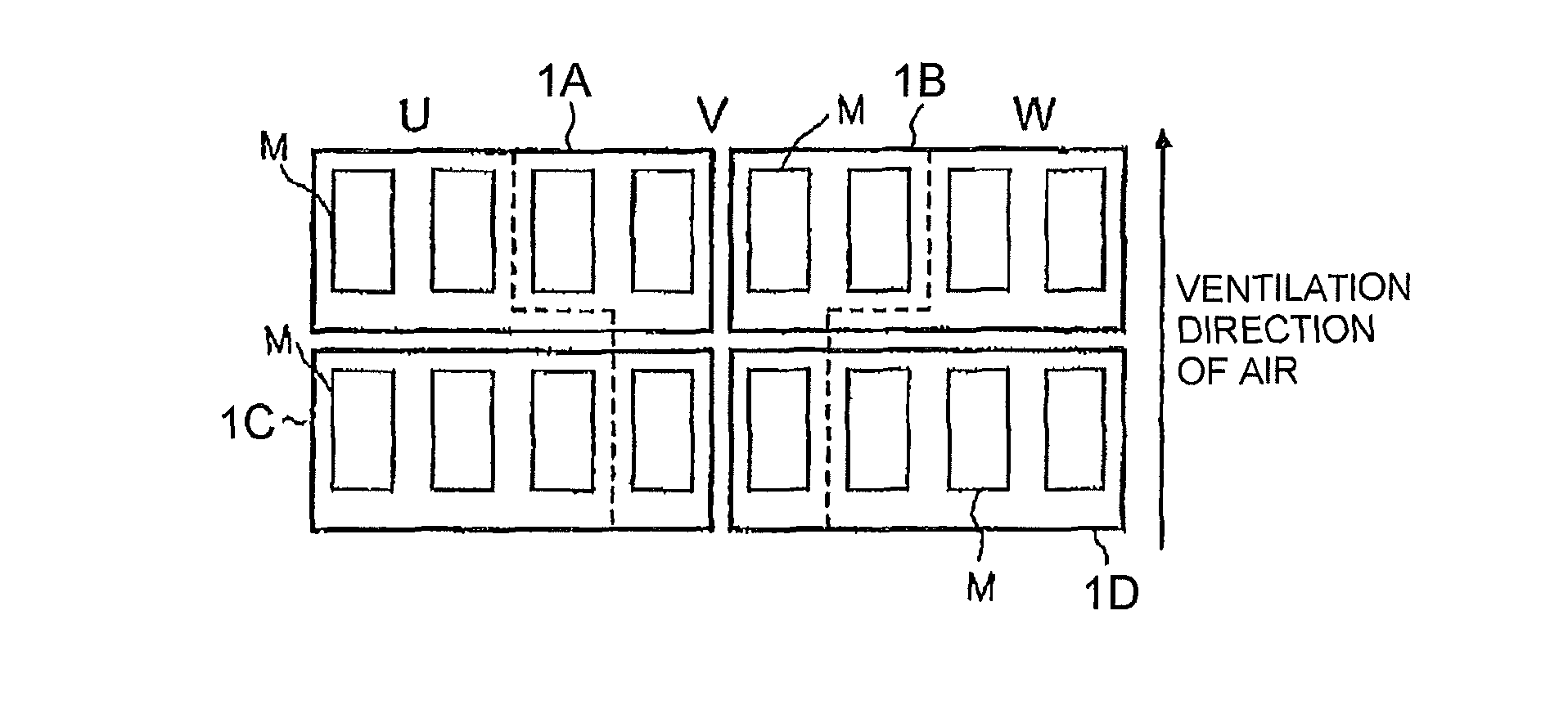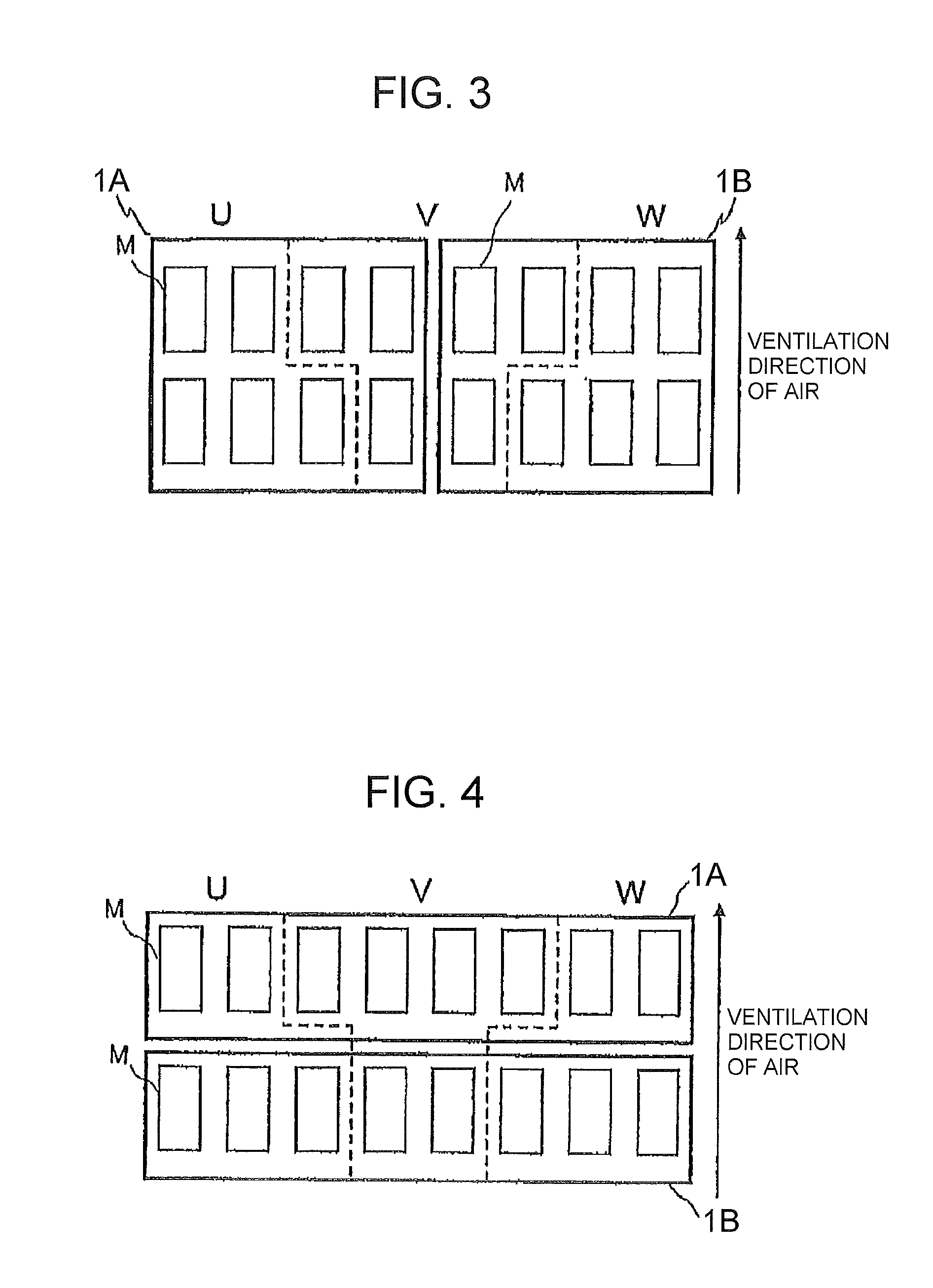Stacked structure of power conversion apparatus
a technology of power converters and stacking structures, which is applied in the direction of power conversion systems, cooling/ventilation/heating modification, power electronics, etc., can solve the problems of less promoting effective utilization of heat sinks, and achieve the effect of reducing the overall size and reducing the cost of the power converter
- Summary
- Abstract
- Description
- Claims
- Application Information
AI Technical Summary
Benefits of technology
Problems solved by technology
Method used
Image
Examples
Embodiment Construction
[0036]FIG. 6 shows a main circuit diagram of a power converter such as, for example, an inverter. In this figure, 11 is a DC (direct current) power source (circuit), 12 is load such as a motor (Mo), and 13 is a power converting part (inverter) consisting of power semiconductor elements which can provide an alternating current (AC) output of a variable voltage and frequency. The DC power source (circuit) 11 may be generally composed of an electrolytic capacitor having large capacitance through an AC power source and a diode rectifier.
[0037]In the inverter 13, the numeral 14 represents an IGBT (Insulated Gate Bipolar Transistor) as a switching element and 15 represents a diode which is connected in anti-parallel to the IGBT, and 6 circuits respectively comprising these elements compose the inverter. The IGBT module may be composed of a pair of two, upper and lower, elements or of a set of six elements. An inverter providing an output in three phases and having a capacitance above a ce...
PUM
 Login to View More
Login to View More Abstract
Description
Claims
Application Information
 Login to View More
Login to View More - R&D
- Intellectual Property
- Life Sciences
- Materials
- Tech Scout
- Unparalleled Data Quality
- Higher Quality Content
- 60% Fewer Hallucinations
Browse by: Latest US Patents, China's latest patents, Technical Efficacy Thesaurus, Application Domain, Technology Topic, Popular Technical Reports.
© 2025 PatSnap. All rights reserved.Legal|Privacy policy|Modern Slavery Act Transparency Statement|Sitemap|About US| Contact US: help@patsnap.com



